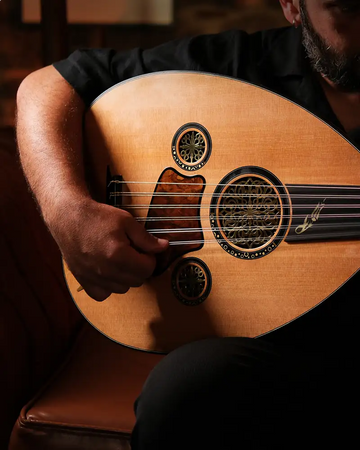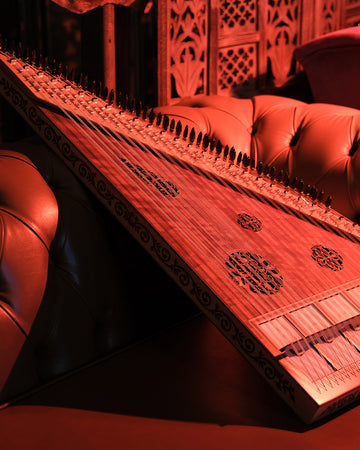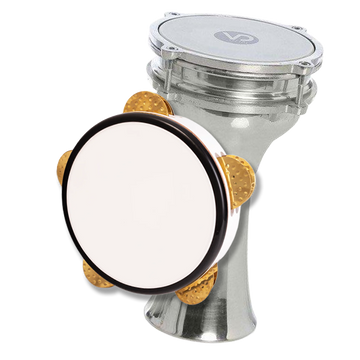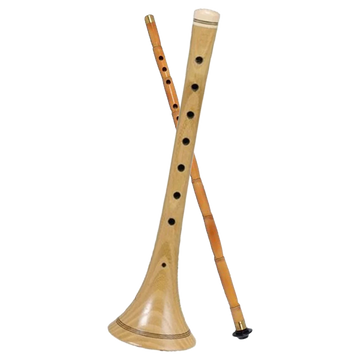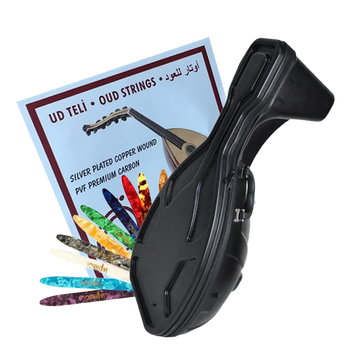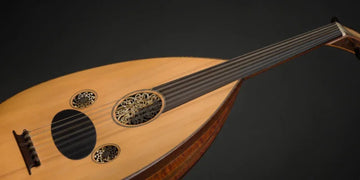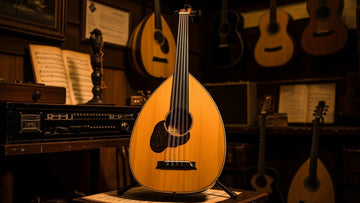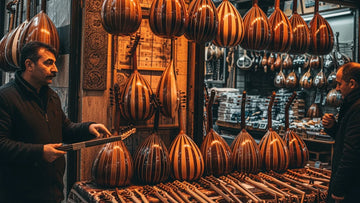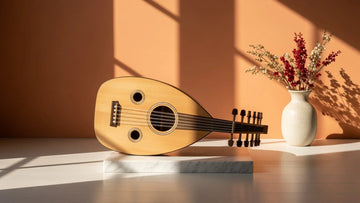The oud string is the essential element that makes the sound produced by any stringed instrument. It is produced from a long, thin material that is placed under tension between two fixed points. Thread size refers to the thickness or diameter of the material.
When a wire is activated by fingers, springs, or hammers, it initiates a vibration that radiates a group of frequencies into the air. One of these usually prevails over the others and is called a note. Other acceptable frequencies are called overtones and give the sound its timbre characteristics.
There is a difference between the size and tension requirements for Arabian and Turkish Ouds. Turkish Ouds are in higher tuning than Arabic Ouds. Therefore, they use lower gauge or thinner spring wires. However, it is necessary to put more tension by tuning the oud wire higher. In this article, we will share with you those curious about oud strings.

What are oud strings made of?
Nylon
The most common material for high-pitched sounds is nylon. Most often, it is transparent, but also available in black or red. Plain nylon is usually glossy, whereas rectified nylon has a matte sheen for added grip when plucking with fingers.
PVF
These threads are straight, unraveled threads with a higher density than nylon. At the same tuning and scale, PVF strings will have a finer gauge and brighter sound than their nylon counterparts.
Nylgut Synthetic
A "gut" material is milky white in appearance. It is also denser than nylon and made exclusively by Aquilacorde.
Nylgut multifilament Silver and Copper winding
Used for the lower rows, wound with silver or copper wire and made exclusively by Aquilacorde.

How to change oud strings
Changing the oud strings may be a bit difficult for you if you have never done it before. That will be an effortless process with the following steps:
- To loosen the oud strings all the way, remove all strings by loosening the ratchet. Then untie the rings attached to the bridge.
- Tie a new rope to the bridge. Furthermore, pass the oud string from the left side of the bridge through the hole on the bridge and twist it as if tying a knot.
- Repeat 1,2,3,4 times and pull tight. (Please see the youtube video for a better explanation).
- Tie the other side of the oud string to the corresponding latch. You need to cut the new thread. So you don't have any extra thread to wrap the clothespin. Count 1,2,3 peg and then cut the string. (For a better explanation, please see the youtube video)
- Insert the string into the hole of the peg twice. After securing, wrap your rope. After replacing the lute strings, you need to re-tune your lute.

Can I use guitar strings for the oud?
Ouds traditionally operate at much lower voltages than guitars. That is part of the sound. If you mean literally 6 classic series, it doesn't sound good. Strings need to be doubled.
As Sultan Instrument, we have discussed what you need to know about the oud strings in this article. Our goal is to reduce costs and hassles for our valued customers and to present the best instruments worldwide. You can visit our website for detailed information about our products.
You may also like it: Required Accessories for Oud
